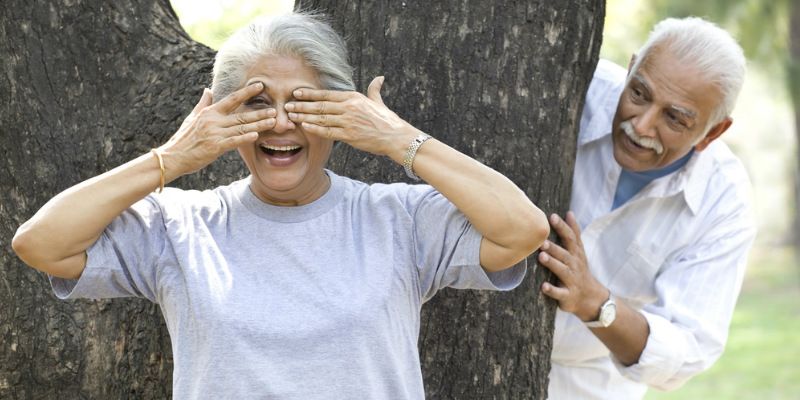From retirement to refirement: why startups should be paying more attention to senior citizens
“Youth has no age”
-Pablo Picasso
In a country recognised the world over for its working age population and growth rates, and where companies rightly and obsessively focus on the power and size of the youth segment, the substantial and large segment of seniors is often ignored. Our news stories, leadership summits, talent hunts etc., are all about the power of the young entrepreneurs, the child prodigies, the young leaders…. relegating seniors to the pages of crime, safety and medical issues. While India is a young country, the population growth rate for seniors is double of India’s population growth rate, and people over 60 years of age are set to become 1/5th of India’s population by 2050, up from just eight per cent in 2010.

Image credit: Shutterstock
Are we ready for this change? Will this growing tribe of seniors continue to get limited coverage only in the folds of the ‘victims of crime’ pages? A resounding 'No' can be heard from India’s new-age seniors who are retiring, not to hang up their boots, but to 'refire' and reboot. Consider these examples:
The changing face of the 'Bollywood Maa' reflects Indian seniors' journey…from the dependant and sad Nirupa Roy to fiery and mischievous Kirron Kher.
- Eighty-four-year-old Yamini Mazumdar, an erstwhile home-maker, started her own dry-cleaning venture (Jeeves) at the age of 68 – a decade after most working people have retired. Having overcome severe arthritis and a stroke, she abhors being labelled ‘very old’. “I’ll use a walking stick when I grow old,” is her response to people suggesting otherwise.
- Sixty-one-year-old Deepak Amembal went back to his love for biking after he retired from Air India at age 58. He embarked on a 72-day cross-country bike journey with a friend traversing Mumbai-Ladakh-North East- Orissa-Mumbai, managing his diabetes and hypertension along the way. “I wouldn’t trade those 72 days for anything in my life,” he speaks happily of his experience.
- Seventy-one-year-old Seethamma, a widow and resident of an elders’ facility near Bengaluru, started playing professional sports – track events – at the age of 56 and switched to throw events at 66. Sports has opened up a whole new world of opportunities for her, including speaking and mentoring young students and making new friends. She is a gold-winner at the 35th National Masters Athletics Meet at Rohtak in March 2015.
- Seventy-nine-year-old Mumbai resident Susheela is in the final leg of her thesis submission for her Ph.D at Mumbai University. After this 1953 Kerala University topper re-started her education by beginning to pursue her MA almost a decade ago, she followed up with an M.Phil.
Consider the fact that 68 per cent of high net-worth seniors in Indian metros are living on their own, as more children are picking up jobs in different cities and countries. Even for those who are living with parents, time spent with them is reducing driven by long work hours, commitments to spouse and children and pursuit of personal interests.
The examples of seniors above and many more are indicating a slow but distinct shift happening underneath the placid waters made up of our silver generation. They want to live a full life and are prepared to make it happen. They’ve gone through their struggles of careers, buying houses, bringing up children, getting them married and now finally have the time and money to focus on their own interests.
This is the generation that didn’t use computers for most of their working life, but look around. Today, there are more than two million Indian seniors active on Facebook every month. Whatsapp has an even bigger popularity amongst this group that is seeking to re-connect with old school, college and work friends. And they are not passive audiences. They have their own views on most things but they’re happy to listen, to appreciate others’ views.

Whether it is engaging on social media or using smartphones to chat on Whatsapp or having Skype calls with families spread around the world, seniors of today’s India are connecting in new ways and getting exposed to the same information that the younger generations are.
And this generation wants to be heard and understood like any other customer segment; they have unique needs of their own, whether it is health/wellness, lifestyle, technology, assistance services or financial products. And, like any other large segment, there are sub-segments, defined by the stage of life, their state of activeness and the family ecosystem. While seniors are perceived to be tougher customers who take more time to decide and are more value-conscious, they are willing to spend, driven by the independence (financial and otherwise) that they have. The challenge for companies is to create products and services that are specifically designed for seniors in their specific sub-segment. This includes not just the product design but also the way the product is distributed as well as the after-sales service model.
Is the Indian market listening?
About the author
Rahul Gupta is the founder and CEO of SeniorWorld. SeniorWorld has a vision to help Indian seniors lead more active, independent, engaged and fulfilling lives, by providing content, engagement avenues, products and services designed exclusively for seniors.











